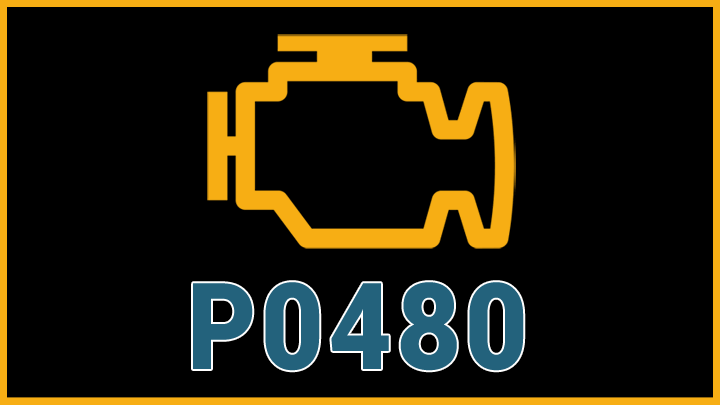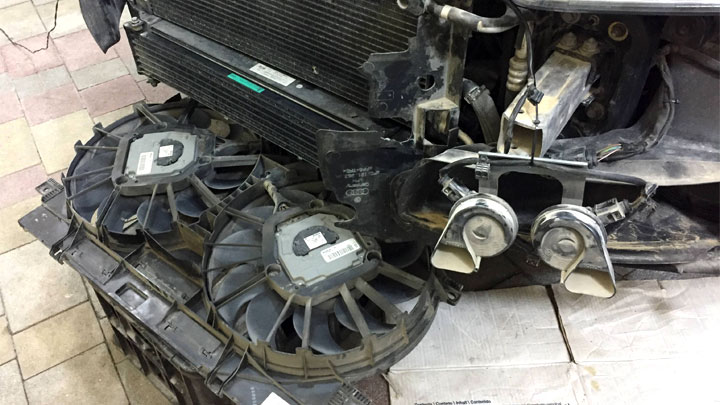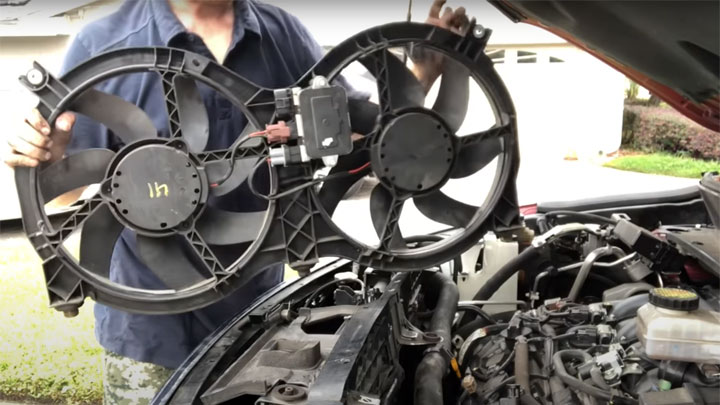P0480 Code (Symptoms, Causes, and How to Fix)
Discovering that your vehicle has a P0480 code can be a worrisome, leaving you concerned about potential repair costs and whether your vehicle is safe to drive. But don’t panic just yet!
In most cases, the repair costs won’t be too bad, but diagnosing the root cause can be a bit tricky. Keep reading to learn about the possible causes of a P0480 code, how to diagnose and fix the issue, and whether you can continue to drive until you can get your car in the repair shop.

What Does Code P0480 Mean?
Today’s vehicles commonly employ the use of electric cooling fans to ward off overheating and make sure that proper engine temperatures are maintained. In the event of an active P0480 fault, an engine’s PCM/ECM has determined that the #1 cooling fan is likely inoperable, signifying compromised cooling capacity.
Under standard operating conditions, the overall engine temperature is monitored via feedback from the engine’s coolant temperature sensor. This feedback, as well as the feedback from various other auxiliary sensors, is interpreted and rationalized by the vehicle’s PCM/ECM.
When a certain engine temperature is reached, a call signal (power/ground) is provided to the #1 cooling fan circuit.
Diagnostic fault code P0480 is logged when electrical feedback pertaining to the circuit’s voltage/amperage is deemed irrational or illogical by the controlling PCM/ECM. Simply put, the controlling module does not detect the anticipated electrical draw across the #1 cooling fan circuit that would typically signify fan engagement.
Symptoms of Code P0480

Diagnostic fault code P0480 is often accompanied by various secondary symptoms, ranging from obvious to subtle. The first step in resolving the issue often involves recognizing these symptoms for what they represent.
Here are several of the most commonly encountered symptoms associated with DTC P0480:
- Illuminated check engine light
- Potential derate or entry into “limp mode”
- Rising temperatures when sitting at traffic lights
- Audible pre-detonation “ping”
- Reduced fuel economy
- Higher than normal emissions output
Causes of Code P0480

The root cause of fault code P0480 can be one of a variety of underlying problems, and identifying the exact culprit can prove to be challenging. However, those familiar with the potential causes have a better chance to diagnose the issue quickly.
Here are some of the most common causes behind the P0480 DTC:
- Defective #1 fan control relay
- Faulty #1 cooling fan
- Faulty coolant temperature sensor
- Damaged #1 fan circuit wiring
- Inaccurate IAT sensor feedback
- Faulty A/C pressure switch
- VSS-related issues
- PCM failure
Is Code P0480 Serious?
Diagnostic fault code P0480 is generally considered to be of moderate severity, due to the impending threat of overheating that typically accompanies cooling fan failure.
Severe or prolonged overheating can lead to far more significant issues, such as blown head gaskets, or even a cracked block/heads. Therefore, fan operation must be substantiated immediately.
In most cases, continued operation of a vehicle with an active P0480 diagnostic fault code should be avoided, at least until proper #1 cooling fan function can be substantiated.
Aside from the risk of overheating, continued operation of a vehicle without full function of its cooling fans can lead to increased fuel consumption, marginalized performance, and enhanced emissions output.
In any event, the root cause of a vehicle’s P0480 diagnostic fault code should be thoroughly diagnosed and repaired as soon as possible. Doing so can very possibly prevent serious engine damage from being incurred.
If you’re not confident in your ability to undertake these repairs on your own, an appointment should be made with a reputable automotive service center at your earliest convenience.
How to Fix Code P0480

The following steps can be used to assist in the diagnosis and repair of a vehicle’s P0480 code. Before diving into any repairs, always refer to your vehicle’s factory service manual for specific guidelines and procedures.
#1 – Scan For Additional DTCs
Before beginning the diagnostic process, check for the presence of any additional diagnostic fault codes. Any such faults that are recorded should be thoroughly diagnosed before proceeding.
At the very least, you’ll know if any fault codes exist that are actually even more serious in nature.
#2 – Inspect Cooling Fan/Wiring
Begin by carefully inspecting your vehicle’s electric cooling fans. Most vehicles will have 2 fans of this type, and it is best to inspect both.
With the vehicle ignition “off”, spin both fans to ensure that they are free, thereby eliminating bearing failure as a possibility.
Next, inspect the wiring harness to each fan for signs of damage. Verify that all connector pins are present and that all connectors are fully seated.
#3 – Verify Sensor Feeds
From this point, one will need to verify that all pertinent sensor-related feedback is relayed and is within specification. This can be done with a quality OBD-II scan tool.
It will be necessary to confirm that all feedback from the vehicle’s ECT, VSS, IAT, and A/C pressure switch is within specification. These values should be compared to model-specific service literature to ensure validity.
#4 – Test Fan Circuit
Assuming all sensor feedback proved valid, your next step is to test the affected fan circuit itself.
First, the presence of power at the fuse to the circuit in question should be verified across both posts of the fuse with a test light or digital multimeter. A lack of power at this point would cast doubt upon the vehicle’s ignition switch.
If power is present, a relay tester should be employed to rule out relay failure, and to verify circuit integrity.
#5 – Test PCM Function
If no issues have been found to this point, it’s possible that the vehicle’s PCM (or ECM) is to blame for the failure in question. In most cases, the PCM/ECM will provide the fan control circuit with a valid ground for operation. Therefore, the potential for PCM/ECM-related fan circuit issues does exist.
Any further testing in this regard should be conducted in strict accordance with factory-backed, model-specific service literature, as to prevent misdiagnosis, and the hefty costs attributed to a misdiagnosis of this magnitude. In other words, these control modules are not cheap!
- 5 Symptoms of an EVAP Leak (and Repair Cost) - Apr 27, 2024
- P0480 Code (Symptoms, Causes, and How to Fix) - Apr 19, 2024
- Car Temperature Gauge Stopped Working? (Here’s Why) - Apr 15, 2024
